#micro fungi
Text



Unknown myxo, on a fallen alder snag.
70, 50, and 50 image stacks
Big Lagoon, California
#myxomycetes#myxomycota#micro fungi#fungi#forest floor#mushroom photography#macrophotography#imagestack#nikon#original photographers
41 notes
·
View notes
Text
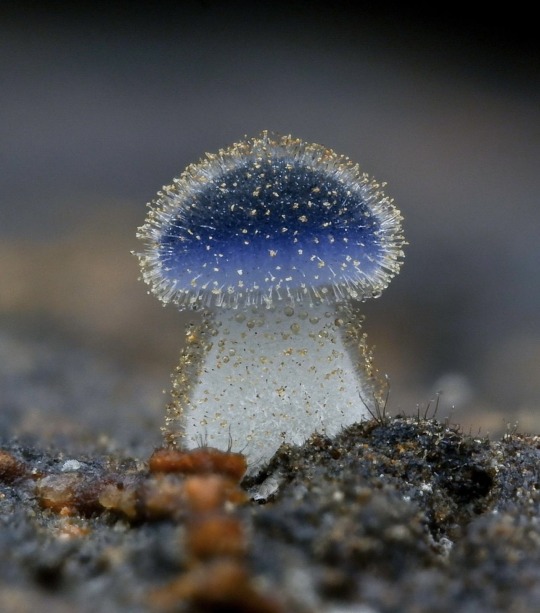

近藍蓋小菇 Mycena Subcyanocephala fungi translates to the "blue-head" and measures at only a single millimeter.
#近藍蓋小菇#Mycena Subcyanocephala#blue head#fungi#mushroom#blue#nature#micro#eric cho#photography#fujifilm
37K notes
·
View notes
Photo
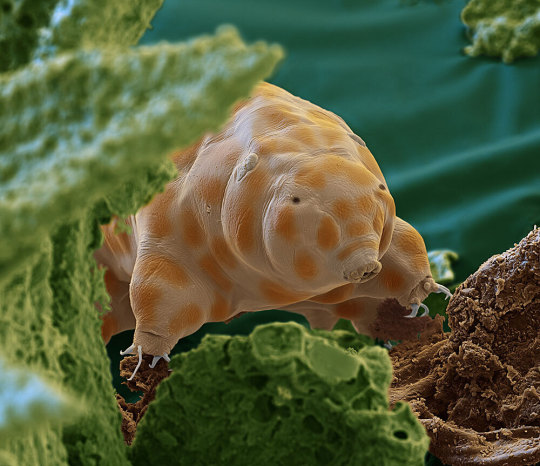
The newfound species seen here is one of about 1,300 known types of tardigrades. It was discovered in moss growing on dead tree trunks in Germany’s Black Forest. Far too small to see with the unaided eye, this creature is among billions of life-forms on the forest floor that are essential to the health of the planet. Magnified 2,400 times.
THESE TINY CREATURES ARE MARVELOUS
PHOTOGRAPH BY OLIVER MECKES AND NICOLE OTTOWA
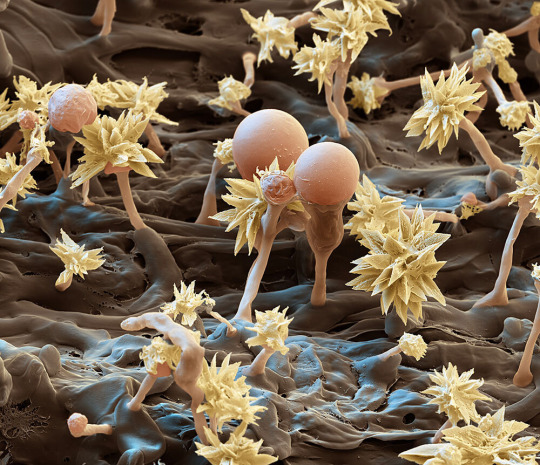
Fungi like this Resinicium bicolor—shown magnified 7,000 times—start breaking down dead trees by digesting lignin, the complex compound that helps form woody cell walls in plants.
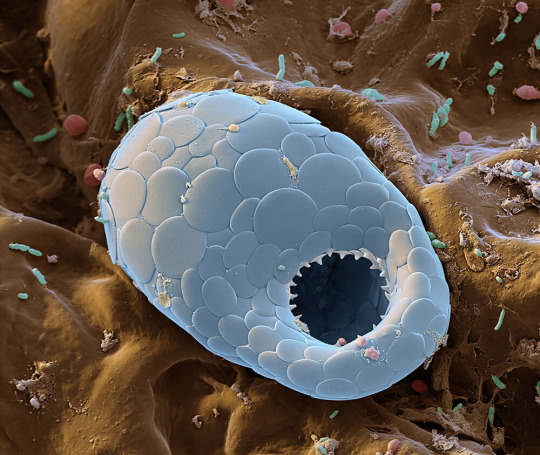
Scales of silica cover the single-celled body of a testate amoeba. These types of amoebas are named for the hard shells they create, possibly for protection against environmental changes within the forest litter.

Resembling a fairy’s gift basket, the fruiting body of a slime mold, magnified 400 times, releases spores from its perch on woody debris draped in fungal filaments. Slime molds feast on other microbes found in decaying plant

Some mycorrhizal fungi make their homes inside plant cells, as seen in this cross section of a European blueberry root. This allows soil residents of very different sizes to exchange nutrients—helping the forest
#oliver meckes#nicole ottowa#photographer#tardigrades#moss#germany#black forest#micro photography#nature#national geographic#fungi#resinicium bicolor#testate amoeba#slime mold#mycorrhizal fungi
610 notes
·
View notes
Text

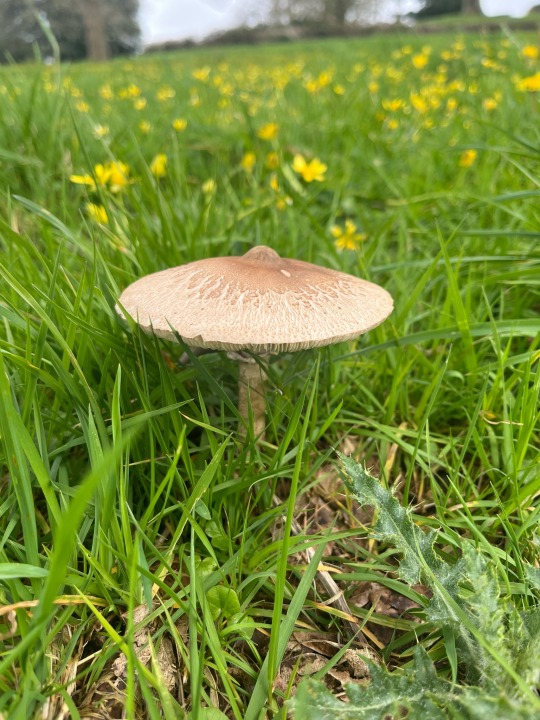
Out on a tiny adventure today was treated by Mother Nature with these beauties 🐞🍄
#micro nature#mini bugs#mini monsters#miraculous ladybug#ladybug#nature#nature photography#mushrooms#muddypuddles#happy family#family adventures#tiny adventure#i wanna be tiny#tiny lady bug#phone photography#mushroom photography#uk mushroom#british wildlife#British wild mushrooms#wild fungi#fungi
8 notes
·
View notes
Text

— Sheng Kao, "Lineage Tracing"
9 notes
·
View notes
Note
hiiii with stink do you like super gross words like rotting and fetid 👀
i get off on just the grissest words
LOVE THEM . rotting fetid putrid moldy cheesy..,,, musk should never be clean stink is RANK stink is DISGUSTING . FUNGAL…..@//@
4 notes
·
View notes
Text
holy shit. our exam timetable came out today. usually our finals are spread over 2 weeks, so we have 2 or 3 days in between to cram. apparently, if i hadn't dropped 2 subjects, i would have had 5 final exams in a week.
that's absolutely insane. no wonder those 2 subjects have a 60% fail rate.
#haem on its own is nuts#we get given a basic fbc result and the slide#and have to be able to identify what condition it is from over 50#and micro examines 2 whole semesters worth of content. which includes identifying bacteria viruses parasties and fungi#just from symptoms and how they respond to certain tests#i would have actually died if i hadnt dropped them i think#or i would have had severe heart or adrenal issues#SOMETHING would have gone wrong#lauratexts2023
0 notes
Text
how many times can you live through the apocalypse?
when you were little there was this beach that was free to go to. you didn't really like it on account of the litter. at one point, a white bag caught around your ankle, and for a moment (fish child), you panicked about jellyfish. on the foam, the red-pink words read thank you, stacked on top of each other, tangled in the kelp.
they have a new program (three thousand american dollars) to send your dead relative to the moon. there is a lot of evidence that our local orbit is becoming ever-more dangerously populated with "micro" satellites - debris in a round miasma becoming a thick web above us. maybe angels cannot hear us through the pollution.
you used to picture deep space like a thick membrane, or a blanket. someone said to you once the universe has no edge and that fucked with you for a long time, trying to picture what shape infinity has. your coworker is writing a short story about ecological collapse, which she is submitting for a little side-money so she can survive the current economical collapse.
the birds haven't gone to sleep this winter. that is probably bad. something that actually freaks you out is the natural temperature of human bodies versus the survival temperature of certain fungi. there is a podcast called s-town, in which a man kills himself over climate anxiety. he was probably meant to seem sort of unhinged. it just seems like it is becoming increasingly clear he was being honest.
space is not empty, we have put our dead into the stars. at some point they will figure out how to put ads into our sleep. you need to pay for the greenlife subscription service to be able to save the world.
there is a lot of ways this poem ends. but you have been wearing the same jeans and shirts since you were, like, 18. it is a hard life, sometimes, watching the entire foundation crack. there was this one moment over the summer, where you were shaking with heat exhaustion and dehydration. you were offered a nestle water bottle.
for three thousand dollars, you can send your ashes into space.
instead, you wash out the peanut butter jar. you put the avocado-toothpick spiked seed ball into water (even though they never grow very far). you borrow what you do not want to buy. you pick up any litter you find. you do not have a lot of control, really. but where you do - if there is one thing you can do, you do it.
something about that. you need to believe that must be true for the rest of humanity. or maybe - you need to believe that to be true, or else there will not be a rest of humanity.
#writeblr#spilled ink#i hope it is clear in this that i wholeheartedly believe the problem is capitalism and not individuals
3K notes
·
View notes
Text

Micro fungi
#mushroom#fungi#fungus#mushrooms#artists on tumblr#nature#original photographers#original photography#photography#photographers on tumblr#Washington#pacific northwest#forest#cottagecore#explore#p
138 notes
·
View notes
Text


Unknown Agaricomycetes, 3mm-5mm tall, growing off decaying Sitka needles.
The slight aberrations on the stalks are from the long antenae and limbs of two small mites moving around the stalks while photographing the mushrooms.
250 image stack
Big Lagoon, California
#agaricomycetes#basidiomycota#fungi#wild fungi#micro fungi#mushrooms#forest floor#imagestack#nikon#macrophotography#mushroom photography#original photographers
3 notes
·
View notes
Note
What roles do lichens play in an ecosystem? I’ve heard of reindeer surviving off bushy lichens at ground level, but are smaller arboreal or rock-clinging lichens an important part of the food web?
Lichens aren't great food compared with like, plants, but sometimes they are the only food. That is generally the niche lichens fill: growing and sticking around where plants and other fungi cannot. So in the depths of winter, in some of the hottest and driest habitats, on surfaces where not much else grows, they can provide a food source, shelter, and habitat, but generally on a micro (think tiny invertebrates) as opposed to macroscale. And like anything that happens on a tiny scale with less-than-charismatic organisms, we don't know much about it. We do know that gastropods eat lichens, and a number of animals including ruminants and rodents rely on them during harsh winter months. Lichens also fill roles in Co2 conversion, nitrogen fixation, water retention, and soil stabilization. And honestly, we are still elucidating the role that lichens (and lots of other tiny organisms) play in the ecosystem overall. The parts they play are likely as variable and diverse as they are!
71 notes
·
View notes
Photo

A color-enhanced scanning electron microscope image of mushroom spores. When ingested, this fungus causes euphoria, hallucinations, and altered perception of time.
PHOTOGRAPH BY TED KINSMAN, SCIENCE PHOTO LIBRARY
#ted kinsman#photographer#science photo library#national geographic#color-enhanced scanning electron microscope#mushroom spores#micro photography#fungus#fungi#nature
48 notes
·
View notes
Note
I mean if we’re getting into it let’s compare to the massive amount of waste including petroleum and plastic waste in the mechanized animal industry. Most micro plastics come from fishing nets (at sea) and tire particles (on land). How are herd animals moved around in mechanized agriculture? Oh, right. Extensive trucking industry. As to an alternative that I have never seen (yet) include partial petroleum plastic, and which is sustainable — check out vegan leather made of fungi mycelium. It’s already available and I would say will become more and more soon.
I am going to bet you aren’t living a disposable plastic free life. Not because it’s impossible — it is, I’m living it with the exception of when I have to be in the hospital or use disposable medical products — but because it’s pretty clear your interest in minimizing plastic use is currently only piqued when it’s time to pick apart someone else not doing it perfectly right. But perhaps you will try yourself, right? It’s always available to you to start.
ma'am it's a 6 word post

97 notes
·
View notes
Note
Out of the species that you’ve collected, what are some of the ones that you’ve found the most interesting? Do you have any favourites, or is that not allowed?

The Charmer: We see so many different mortals that it's less a matter of specific species and more a general trend we may appreciate in mortals. For me, I very much enjoy extremophiles, which are a type of creature that is capable of surviving in environments that would kill most other mortals, and they may even thrive in them. Creatures with high tolerance to near immunity to extreme conditions of alkalinity, salinity, low atmosphere, high pressures, radiation, etc.

The Charmer: A majority of mortals we've found to be extremophiles are micro-organisms, but there are rare examples of plants, animals, and fungi which may qualify for this terminology. Very rarely, we will encounter an entire planet of what might be considered by most life in the Grand Constellation to be extremophiles, because the conditions of the planet in general tend towards these inideal environments, so if life evolves at all it would all follow the general pattern of resistance to a place so inhospitable to life. As an example, we are considered extremophiles.

The Curator: I like mortals that are Exceptions, like when a large selection of animals share a certain trait like laying eggs but there's a small handful of examples that give live birth or vice versa. Or like when there's a type of plant you would logically assume belongs to another type of plant than it actually belongs, like how some plants that mortals perceive to be a "tree" is actually a "grass".

The Cartographer: I like domesticated animals and plants, which can't exist without a relatively intelligent species interacting with and altering a wild species over time. Like plants that are selectively bred to produce more of their edible parts, or animals that are selectively bred to be more docile or to produce more of something beneficial to the intelligent species, like fibers or food.
#ask blog#ask the archivists#asks are open#toh the archivists#the owl house#toh#toh oc#the archivists#id in alt text#taking this opportunity to talk about fun things like how flamingos are extremophiles#and all palm trees are an herb in the same class as grass and not actually a tree at all#Bamboo is there also and not a tree
22 notes
·
View notes
Text
My rewrite if steven universe so far, lore and art:



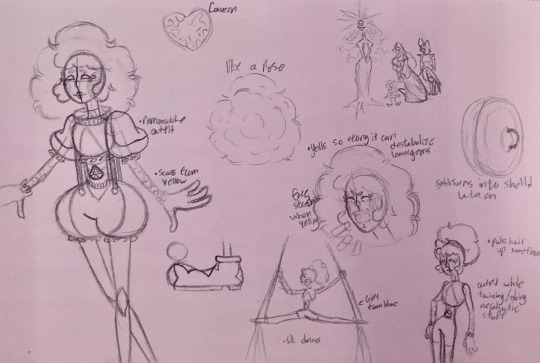
White was the first created by a combusted star coming into contact with a type of alien fungus that was trying to spread as much as it could, which is what cause whites motive to try and colonize till the end of the cosmos. When white took form she rooted herself into what is home world, most see her as home world herself since she is whats keeping it together. She is like a tree, and when making gems she used her cavern in her chest to take all moisture from the air and inject her essence into the plant, creating her original court, all of these gems where made with little care, the only thing important was if they could get the job she wanted done. So she sent two groups each carrying essence filled with impurities she didnt want which is what made yellow and blue. For a while time goes on each diamonds courts growing and growing till one day white feels a build up of impurity, earth is the planet she chose to incubate the next diamond, who was meant to be red but whites impatience to get rid of her impurity sabotaged pinks creation and so she came out off color, pinks creation took out russia and bits of the areas that surrounded it, as thats where she was incubated at, when she emerged she came out kinda like amethyst, blank and clueless. So she ran into the forests where she made indirect contact with humans, as she watched them her body started to take a proper form, her anatomy mimicking that of a humans. When white saw she was quick to try and shatter pink not wanting suck a pathetic being to be associated with power but blue and yellow talked her out of it using the reason of lack of resources to not destroy her. Since pink was made on earth she was given it to finish colonizing it but one thing led to another and the rebellion started.
Brief gem biology and sneak peak at the crystal gems:

So in my rewrite, gems aren’t made of light, their a elemental fungi organism. All gem stones have seams with micro holes in them which is what allows gems to retreat back into their stone and regenerate. But they only retreat into their gem when they are harmed in a way that would kill a human. When inside their stone, a gem is conscious and can observe around them, but when in a bubble or destabilized they are unconscious. A gem cant, or well shouldn’t rush out of their gem when regenerating as it may harm their physical form. When a fusion poofs the gems that make it up will not regenerate until all gems in the fusion are ready to form back. Most clothes a gem wears is their body but like the diamonds other gems will add accessories to themself that are removable. When a gem like amethyst stays in the ground to long or “come out wrong” their gem will always be the default size of that gem type so the stone is not proportional to the body the gem has.
#art#my art#knickknack’s art#artists on tumblr#sketch#traditional art#artist#fanart#steven universe#steven unvierse au#white diamond#blue diamond#yellow diamond#pink diamond#garnet#pearl#amethyst#amethyst su#amethyst steven universe#pearl su#pearl steven universe#garnet su#garnet steven universe#pink diamond su#pink diamond steven universe#sapphire#sapphire su#sapphire steven universe#ruby#ruby su
70 notes
·
View notes
Note
You mentioned something in one of the asks about aquatic shroomors/meatmoss and daggoths being capable of limited underwater respiration? What are those species like?
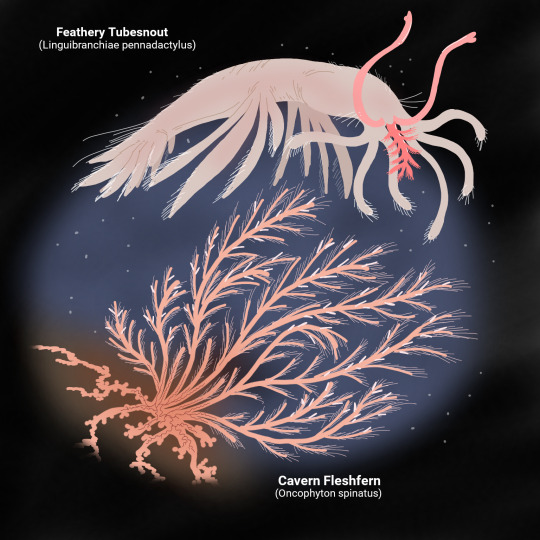
Many underground rivers and lakes pass through the Sub-Arcuterran cavern system, running for miles through its tunnels and chambers for great distance, their waterways slowly but surely eroding through rock, and expanding the subterranean network that for millennia has become a strange and alien world.
In this lightless realm, plants cannot survive, and thus the biosphere has rooted itself on the existence of chemosynthetic bacteria: a plentiful organism able to thrive without sun. Forming bacterial mats on walls and floors and on the water's surface, the bacteria have struck up a symbiosis with fungi, forming the mocklichens, but more recently with a far more unusual partner--meatmoss, a free-living, free-growing harmster tumor that has long since outlived its host and begun to grow much as a slime mold would.
Requiring moist environments to grow, some have taken to the water entirely: where both the meatmoss and its symbiont bacteria absorb necessary compounds from the water and from the surface it anchors to. As meatmoss respires through direct absorption of oxygen, aquatic meatmoss, such as cavern fleshfern (Oncophyton spinatus) have developed long, branching frond-like shapes to maximize the surface area for gas exchange, running along rock as webbed filaments but producing clusters of long tendrils that in essence serve as the whole organism's "gills". Cavern fleshfern also uses these fronds to reproduce, forming singular cells encased in capsules containing their symbiotic bacteria and releasing them into the water to settle and grow elsewhere where the currents of the water take them.
The abundance of fleshfern has not gone unnoticed by a group of aquatic daggoths: the tubesnouts. While most are filter-feeders that subsist of the floating mats of chemosynthetic bacteria and the micro-invertebrates that thrive on them, one species, the feathery tubesnout (Linguibranchiae pennadactylus), has taken up grazing on fleshfern that grows in large masses at the water's bottom. Like all mammals, feathery tubesnouts are air-breathers: their nostrils elongating into flexible built-in snorkels, their central nose tendril being greatly reduced to more easily reach the surface.
But the feathery tubesnout has a secret trick up its sleeve: its tongue, equipped with fringes that allowed its kin to filter-feed, has become highly vascularized, allowing it to absorb oxygen from the water. This is not a particularly efficient way to respire, even when aided by its slow metabolism and small size that greatly reduce its oxygen needs, but it can prolong its dives for up to three hours before needing to surface for air again. As such, propelled by undulations of its eight pairs of fin-like fingers and navigating with a combination of touch, hearing, and a strong sense of taste that functions much like smell when underwater, the feathery tubesnout grazes for hours on end at the bottoms of the subterranean ponds, chewing away at fleshfern fronds with the aid of its incisors--still unmistakably rodent-like ones that seem almost out of place on something so un-rodentlike.
This frequent grazing over millennia has incited a response from the fleshfern: to protect its reproductive and respiratory fronds, it has begun growing defensive measures on them to ward off attackers. These come in the form of thorn-like spikes, growing along the stems and branches of the fronds, much like the thorns of the stems of a plant. Yet it is almost easy to forget that the meatmoss is in fact an animal: made entirely of masses of undifferentiated cells, a new semblance of anatomical order has begun to arise from the chaos of a mass of free-living cancer cells from millions of years in their new lifestyle. Modified clumps of cells lining the fronds have developed the ability to produce keratinous sheaths from a long-hidden, latent ability to form specialized tissues akin to those of a more-organized animal: to defend itself, in the dawn of a strange new arms-race, a false plant has struck back with an analogue of botanical thorns--but are, in a structural sense, claws.
107 notes
·
View notes